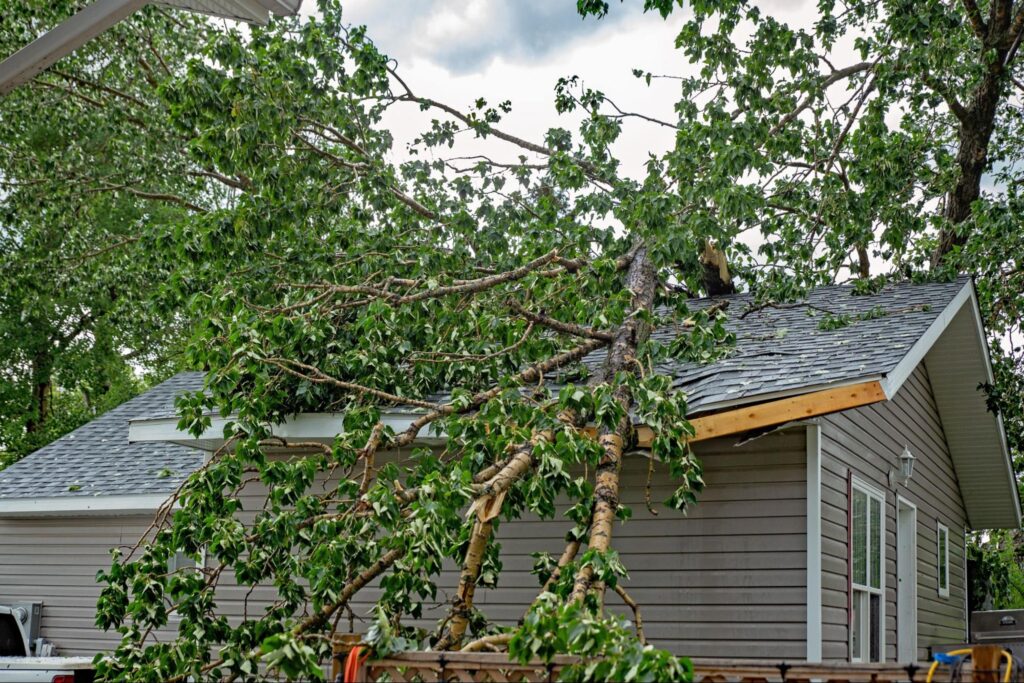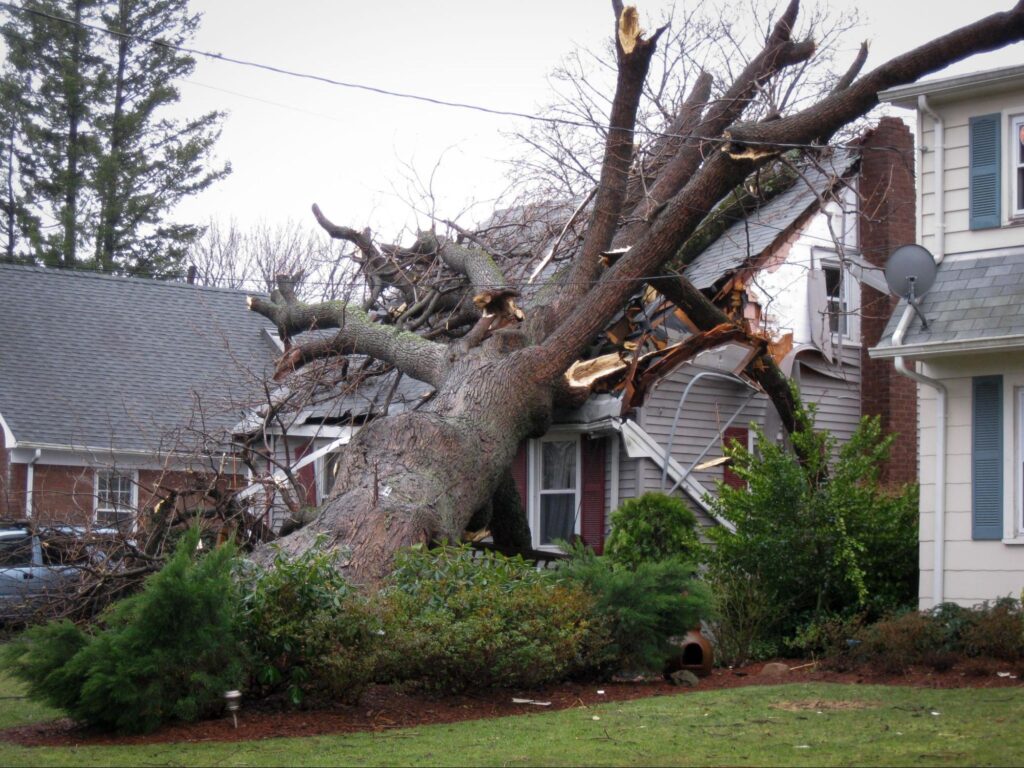Spring in Memphis doesn’t show up quietly. One minute it’s calm, the next it’s wind, sideways rain, and branches flying around like they’ve got somewhere to be. If you’ve ever had to deal with a downed tree or watched one fall too close for comfort, you know how important it is to be ready before the storms roll in.
That’s what Red’s Tree Service is here for. Our team understands how quickly a rough storm can turn small tree issues into big, expensive ones. If you have trees on your property, it’s worth looking closer now before the weather leads to storm damage on your property.
Don’t Skip the Tree Check
Just because a tree looks solid doesn’t mean it’s ready for high winds or heavy rain. A quick glance won’t cut it. If you want to storm-proof your property, the first step is a real assessment, not guesswork.
When Red’s Tree Service comes out, they’re not just eyeballing things. They’re checking for hidden decay, loose or overgrown limbs, signs that the roots might be shifting, and whether the ground around the base is holding firm or starting to erode.
Even strong trees can have problems under the surface. Once a storm hits, it’s too late to go back and fix it. Waiting it out usually means paying more later.
Smart Pruning Makes a Big Difference
When a storm rolls through, dead branches are the first thing to go flying. Overgrown limbs can catch the wind like sails and make it harder for the tree to stay balanced. That’s why pruning matters, especially before spring weather hits full force.
It’s important to cut the weight it can’t hold and give it the best shot at staying grounded when the wind picks up. Every cut is intentional. The goal is to take pressure off weak spots and make sure the tree isn’t set up to fail. Here’s what targeted pruning does:
- Removes brittle limbs that are already on their way down
- Opens up dense sections so the wind can move through instead of pushing against them
- Keeps branches from growing too close to your roof, fence, or power lines
- Helps stabilize the tree by correcting growth that’s pulling too hard in one direction
The idea is to strengthen what’s there and cut what’s putting everything else at risk. When done right, it can make the difference between a tree that weathers the storm and one that doesn’t.
The Root of the Problem
Trees don’t fall because they want to. They fall because the ground underneath them gives way. In Memphis, spring rain can soak the soil fast. That’s bad news if your tree’s roots are shallow or damaged. Once that soil turns soft, gravity starts pulling, and a once-stable tree can shift, lean, or collapse. You’ll want to keep an eye out for:
- Roots sticking out of the ground more than usual
- Soft, squishy soil around the base
- Fungal growth near the trunk
- A sudden lean, even a small one
If something feels off, it probably is. Trees don’t tip over overnight without warning signs.
Some Trees Need a Little Backup
Not every tree is a lost cause just because it has a few weak points. In some cases, you can extend its life and keep it stable with the right kind of support.
Cabling and Bracing
When a tree has a wide canopy, a heavy lean, or a section that’s starting to split, cabling and bracing can give it the backup it needs. These systems help limit movement during strong winds and take the pressure off areas that can’t handle it alone. This is a solid option when:
- The tree is mostly healthy but showing signs of strain
- A split trunk or a large limb could become a hazard if it’s located near your home, garage, or a path you use every day
It won’t replace long-term care, but it can reduce the immediate risk and help you buy time before deciding on next steps.

Sometimes, You Have to Let It Go
There are times when holding onto a tree just doesn’t make sense anymore. Whether it’s become a safety issue or the damage is past the point of repair, removal might be the safest move, even if it’s not the easiest one.
Knowing When It’s Time
A tree doesn’t have to fall over to be dangerous. If it’s too compromised, it puts everything around it at risk. And hoping it makes it through the next storm isn’t a plan. You will want to think seriously about removal if: It’s completely dead or hollow inside.
- There are visible cracks near the base or along major branches, or if it’s started leaning toward your home, power lines, or driveway
- The roots are damaging concrete, pipes, or foundations
One tree coming down in the wrong spot can cause thousands in repairs. If you’re unsure what you’re dealing with, Red’s Tree Service will take a look and give you a straight answer. Don’t forget the space around your tree; it’s not just the tree itself that can cause trouble. Vines, clutter, and even stuff in your yard can turn into flying hazards during a storm. Before spring really hits, take a walk around. You’re looking for:
- Piles of branches or leaves up against the base
- Ivy or vines choking the lower trunk
- Loose patio furniture or decor that could slam into a tree, or your house
Cleaning things up takes less time than dealing with a tree that’s been compromised by something avoidable.
Memphis Weather Throws Everything at You
Memphis doesn’t have predictable storms. One week it’s dry and breezy, the next it’s dumping rain with wind that knocks down traffic lights. Here’s what your trees are up against:
- Wind: Even trees in good shape can snap if the wind hits just right.
- Rain: Soft soil means less grip. Top-heavy trees are especially at risk.
- Lightning: Tall trees can get hit and split. Damagisn’t’t always visible right away.
- Aftermath: A tree might survive the storm but be too weak to stay standing the next time.

A Local Team That Knows What to Look For
Storm damage looks different in the Memphis area. That’s why local help matters. Red’s Tree Service isn’t just guessing around when they give advice. Our team has seen what Memphis storms can do. We know how to spot early warning signs, stabilize trees without overdoing it, and give you a clear plan without pushing unnecessary work.
Contact us to see how we can help.
This post first appeared on https://redstreeservice.com